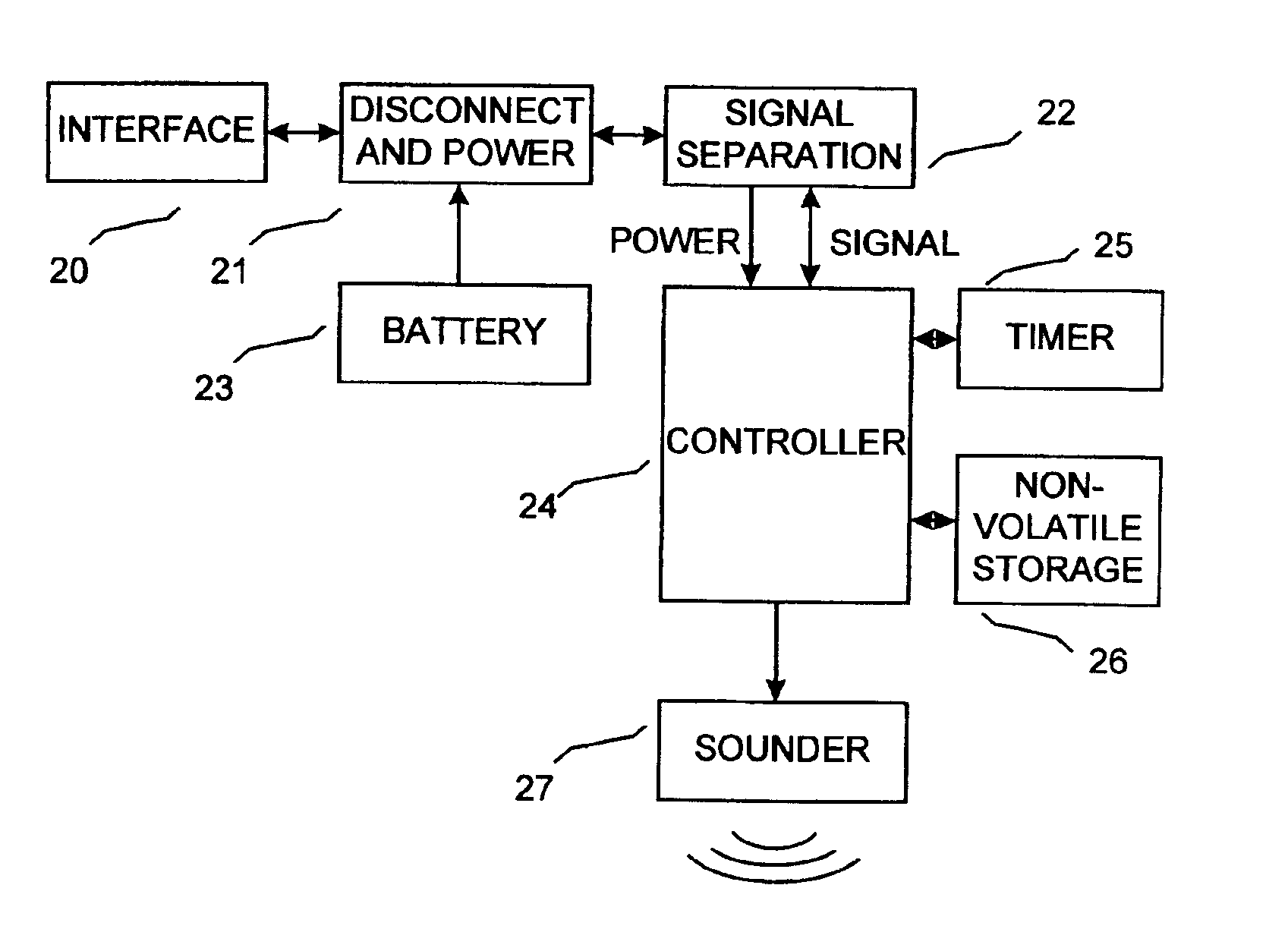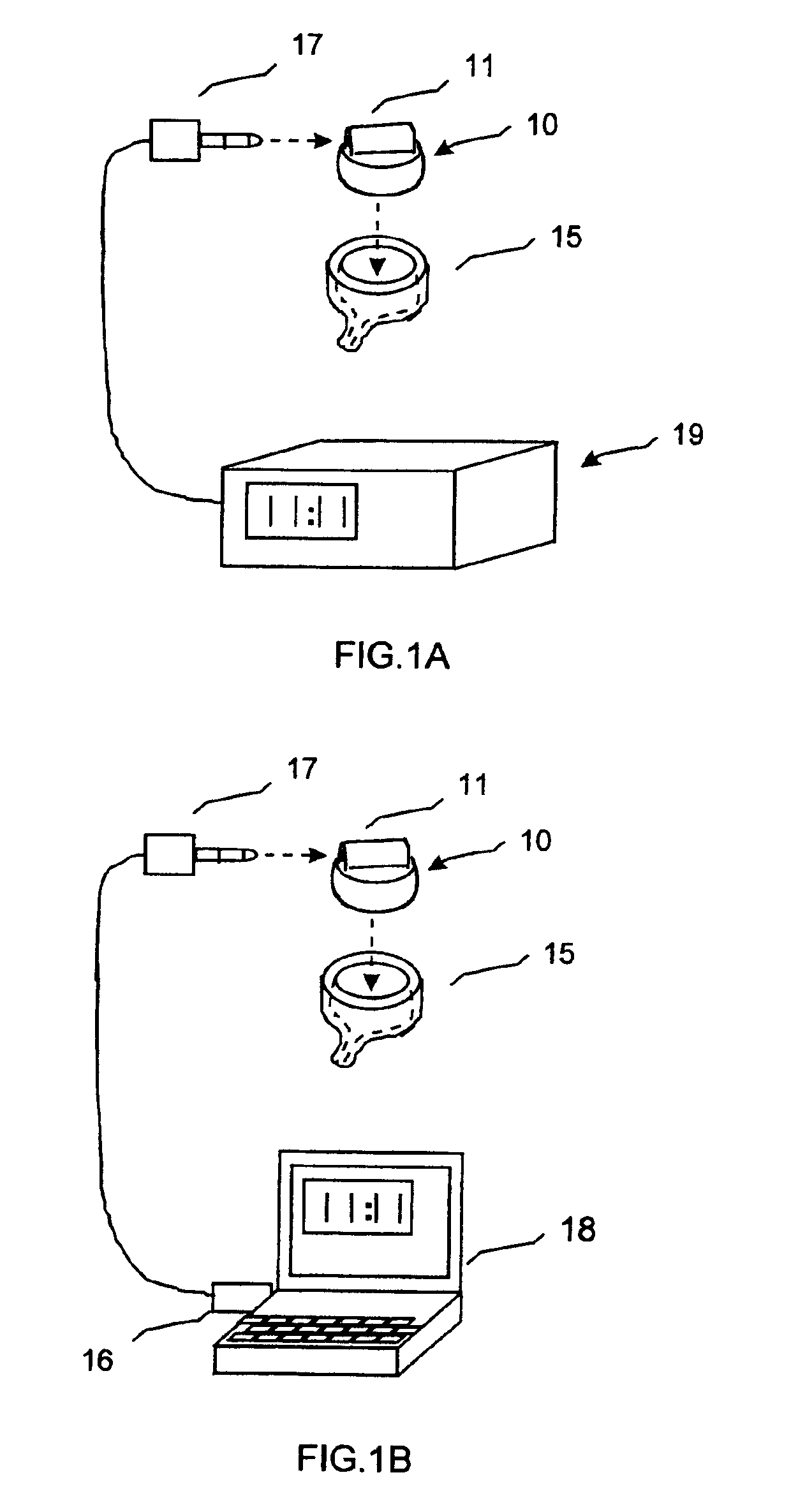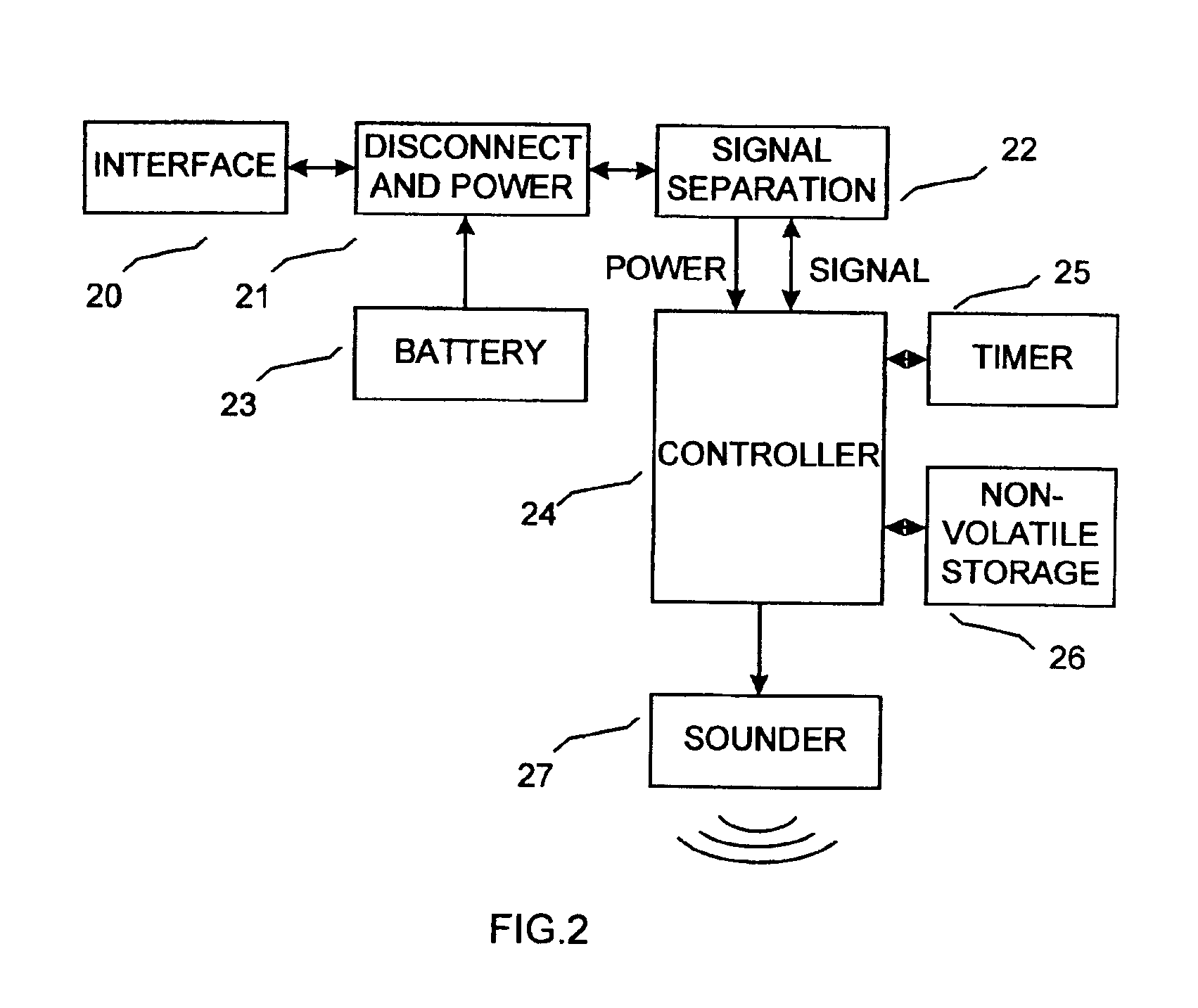Autonomous ear-plug alarm with separate setting device
a technology of alarm and setting device, applied in mechanical clocks, instruments, horology, etc., can solve the problems of not awakening at all, waking others, and the problem of even more complex problems, so as to reduce the impact of partial hearing loss, reduce the repetition rate, and reduce the effect of waking others
- Summary
- Abstract
- Description
- Claims
- Application Information
AI Technical Summary
Benefits of technology
Problems solved by technology
Method used
Image
Examples
Embodiment Construction
Overview (FIG. 1)
[0043]The preferred embodiment of the ear plug alarm is presented in FIG. 1A. An ear-piece 10 connects to a base station 19 for setting the alarm, then operates autonomously when disconnected. In FIG. 1B the base station 19 is implemented using software on a personal computer 18 with an interface adapter 16 to adapt RS-232 serial signals to the ear-piece 10. The ear-plug alarm would be available in both configurations. A base station connector 17 is place into an ear-piece connector 11 to set the time, then removed afterward.
[0044]Rather than requiring that the ear-piece 10 be manufactured in a shape to fit the ear, it is placed in a commercially available gel ear-piece adapter 15. These are available in different sizes, keeping the ear-piece 10 in place comfortably and reliably for sleeper with different ear sizes and shapes.
[0045]While the ear-piece 10 is connected to the base station 19 it is powered from the base station 19. When disconnected it is powered by in...
PUM
 Login to View More
Login to View More Abstract
Description
Claims
Application Information
 Login to View More
Login to View More - R&D
- Intellectual Property
- Life Sciences
- Materials
- Tech Scout
- Unparalleled Data Quality
- Higher Quality Content
- 60% Fewer Hallucinations
Browse by: Latest US Patents, China's latest patents, Technical Efficacy Thesaurus, Application Domain, Technology Topic, Popular Technical Reports.
© 2025 PatSnap. All rights reserved.Legal|Privacy policy|Modern Slavery Act Transparency Statement|Sitemap|About US| Contact US: help@patsnap.com



